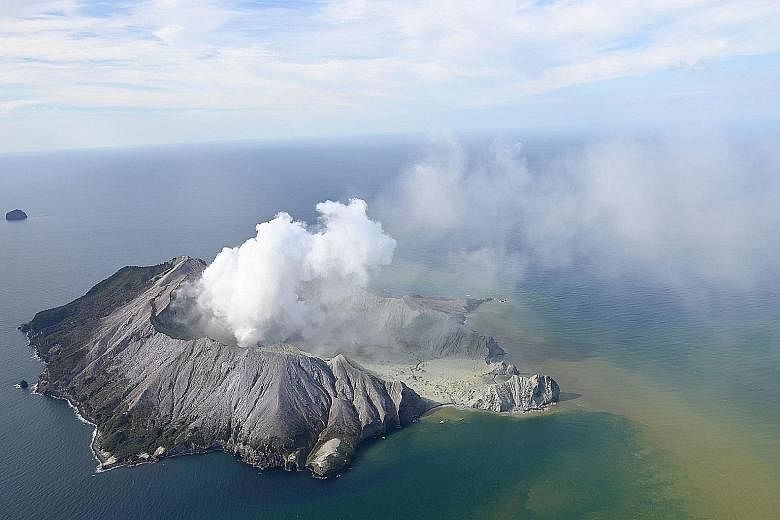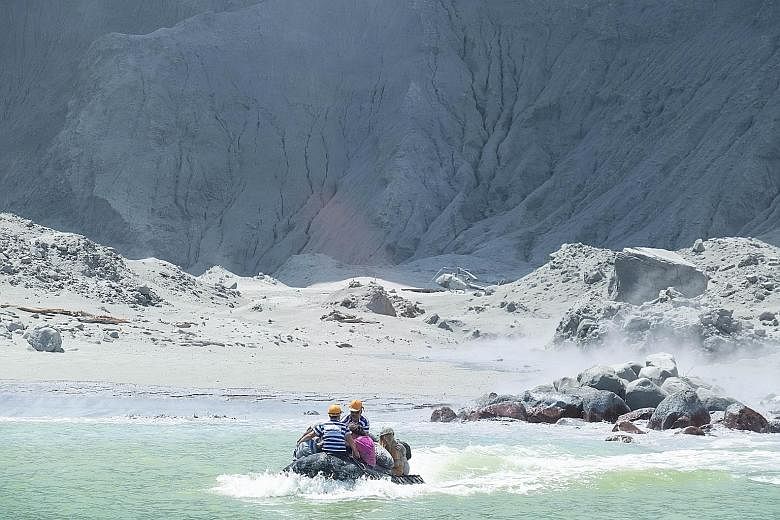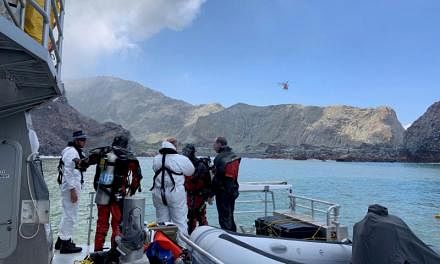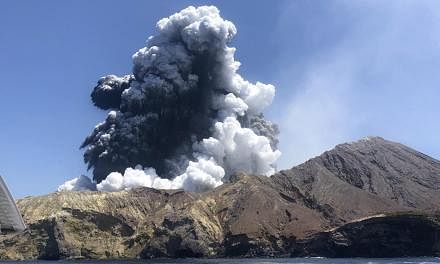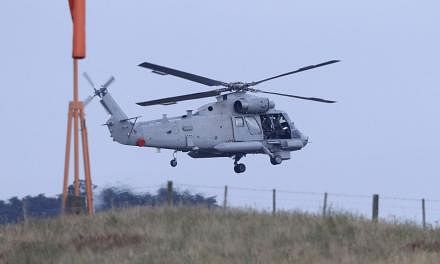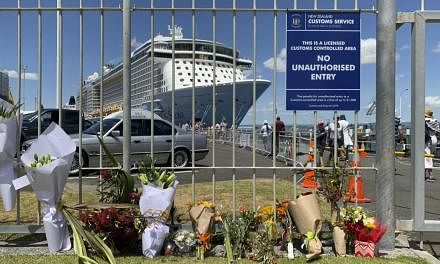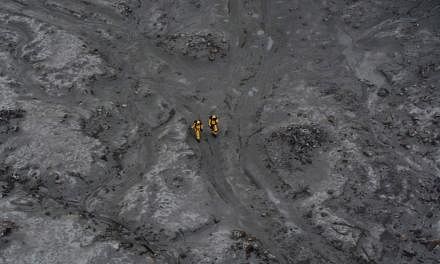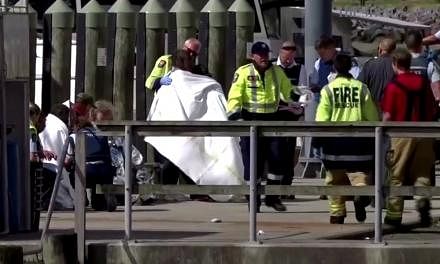TAURANGA (New Zealand) • More than two dozen people were feared missing today, a day after a volcano that is a tourist attraction suddenly erupted off the coast of New Zealand's North Island, killing at least five people and injuring up to 20.
New Zealand police said early today that they did not expect to find any more survivors from the volcanic eruption.
About 50 people, New Zealanders as well as foreign tourists, were feared to have been nearby at the time, and several were seen near the rim of the crater minutes before the eruption.
Police said in their statement that there were no more signs of life on White Island after rescue helicopters and other aircraft conducted a number of aerial reconnaissance flights, though it was unclear how many people were unaccounted for.
The rescue services have been unable to reach White Island as it remains too dangerous.
"Police believe that anyone who could have been taken from the island alive was rescued at the time of the evacuation," the statement said. "Police (are) working urgently to confirm the exact number of those who have died," it said, adding that a ship would approach the island at first light today to deploy drones and observational equipment to further assess the situation.
Many day tours visit the island regularly, and the Ovation of the Seas cruise liner was there at the time.
A webcam monitoring the volcano showed that at least one group of tourists was inside the crater moments before it erupted and blanketed the area in a massive ash cloud.
White Island is about 50km from the east coast of North Island and huge plumes were visible from the mainland.
Prime Minister Jacinda Ardern told a news conference: "We know that there were a number of tourists on or around the island at the time, both New Zealanders and visitors from overseas.
"I know there will be a huge amount of concern and anxiety for those who had loved ones on or around the island at the time. I can assure them that police are doing everything they can."
On Twitter, Australian Prime Minister Scott Morrison said Australians had been affected by the eruption and the government was trying to find out more.
Twenty-four Australians were on White Island when the volcano erupted, Australian media said.
The eruption was unexpected, but not unusual, an expert said.
"Sudden, unheralded eruptions from volcanoes such as White Island can be expected at any time," University of Auckland volcanologist Shane Cronin said in comments published by the Australian Science Media Centre.
Geological hazard tracker GeoNet raised the alert level for the White Island volcano last month due to an increase in volcanic activity.
Just last week, GeoNet volcanologist Brad Scott said in a report that moderate volcanic unrest continued at White Island.
The volcano's last fatal eruption was in 1914, when it killed 12 sulphur miners. There was a short-lived eruption in April 2016.
White Island became a private scenic reserve in 1953, and daily tours allow more than 10,000 people to visit the volcano every year.
"Whakaari", as it is known in Maori, is New Zealand's most active cone volcano, built up by continuous volcanic activity over the past 150,000 years, according to GeoNet.
About 70 per cent is under the sea, making the massive volcanic structure the largest in New Zealand.
